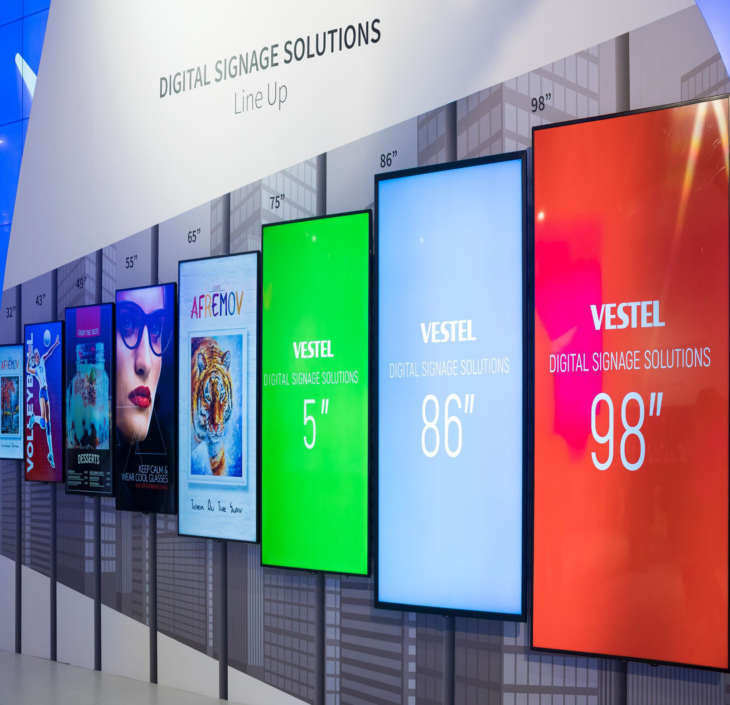What kind of content distribution do you know? Most people will remember social networks, blogs, emails, webinars, and other online channels. However, the content strategy should extend to the offline space. And not just in the form of printed materials such as booklets, brochures, letters, or marketing kits. Today, digital advertising technologies are particularly relevant. They allow you to broadcast content and interact with consumers offline, combining brand marketing into a single system.
Contents
What Does DS Include?
This technology includes all possible electronic media. You can see it everywhere – on video walls, display screens, video showcases, etc. It’s a technology that provides visitors to consume information immediately or to communicate directly to brand representatives or other users. Digital marketing experts also call this technology “the 5th screen”.

Source: kinly
Digital Signage Is A Method Of Communication
Digital signage technology helps to continue the brand content strategy. The experts from Reach Media Network tell us that consumer interaction takes place at all levels: on the company website, mobile app, social networks, retail outlets, etc. The consumer receives the necessary information everywhere. Digital signage promises to be used in catering, banks, stores. Perhaps this digital technology is most effective in retail because, in a store, the customer can immediately translate interest in buying the goods transforming it into a living profit. Digital signage is not that much a means of advertising as it is a method of communication with the consumer. It creates an emotional connection with the brand. Therefore, without excellent content, such technologies are not sustainable. What’s the point of the big bright screens if they are not interesting to the user? The content will make your project a success. Therefore, both IT department representatives and marketing professionals must work together on Digital Signage projects.
Digital Signaling in Practice
The first Digital signage consisted of ordinary screens or monitors to broadcast information. According to Signature Channel, they can display any type of content: informative, engaging, branded, news, sports, etc. Over the past few years, digital signs have evolved from one-way communication posters to interactive experiences and two-way communication technologies. Modern Digital Signage can do a lot more – you can “interact” with touch, gestures, and mobile devices.
Digital signage and retail
Today, in the Internet age, features such as information, mobility, and networking have become more apparent. In this context, the market potential of digital signage is immeasurable. In many application markets, the retail industry should naturally take the lead. With the promotion and deployment of the Internet, the retail industry has changed a lot. E-commerce has popped up. If traditional brick-and-mortar stores want to stay in the game – they have to go digital. In these circumstances, digital signage has naturally become the first choice for digital retail.
Currently, digital signage has become an indispensable information dissemination tool for physical retail stores. However, many stores have only discovered the surface function of digital signage, so the digital advertising function is not applied to the fullest extent possible.

Source: schubertsinc
Conclusion
The use of digital signage is very flexible. It can be installed in-store or installed in crowded marketing locations. It can improve the marketing effect while meeting consumers’ needs anytime and anywhere. What’s most important, it offers consumers a new shopping experience.
To learn more, you can visit https://www.leddisplayrentals.net/.
